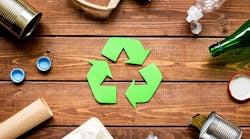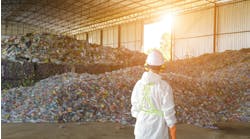Is Extended Producer Responsibility On The Rise For Packaging?
On July 13, 2021, Maine became the first state to enact Extended Producer Responsibility (EPR) legislation for packaging. On August 6, 2021, Oregon followed, enacting a similar EPR law applicable to packaging. Other states are poised to pass similar legislation. This article discusses the concept of EPR and summarizes the state legislation.
What Is EPR?
EPR has been around a long time. It is the concept that the original producer of a material bears responsibility for it beyond post-consumer use. In the European Union, it is a much more mature concept and business norm. In the United States, EPR is viewed chiefly as a funding mechanism to support recycling programs by shifting the responsibility to pay for these programs from municipal and other public sources to private product producers. EPR embeds a version of “polluter pays.” Many U.S. organizations have actively espoused EPR for more than 15 years, but industry pushback has slowed adoption of mandated EPR programs like those recently enacted in Maine and Oregon.
U.S. EPR programs for certain product categories, including paint, carpet, batteries and pharmaceuticals, already exist. However, mandated programs have not targeted other product categories, like plastics and packaging, until now. Several factors have converged to jump-start these packaging EPR initiatives. Unsurprisingly, the costs to maintain recycling programs in general have increased dramatically. Second, the pandemic has generated vastly more single-use packaging waste; the imperative to recycling such waste has drawn more public attention to the issue, which predated the pandemic but which COVID-19 greatly exacerbated. Finally, the complexity of the packaging waste stream has increased substantially; some materials are not as amenable to recycling as others. This has incentivized lawmakers to craft mandated solutions to these problems; shifting the cost burden to the producer is widely seen by some as an efficient fix.
New EPR Packaging Laws
The Maine law focuses on plastics and packaging materials. The law requires product producers to fund stewardship organizations that collect, recycle and otherwise manage end-of-life products manufactured by the producers. The legislation extends to most packaging materials, but includes exemptions for paint and beverage containers, small businesses, and low-volume packaging producers, all terms defined in the law. While the law is intended to incentivize the use of materials that are easily recycled, its primary purpose is to transfer the cost of managing and recycling packaging waste to the product producer.
[pullquote]
The Oregon law creates an EPR program that includes several “covered products,” including packaging, printing and writing paper, and food serviceware. Covered products specifically exclude several categories of products, including bound books, beverage containers, napkins, paper towels, and specialty packaging used exclusively for industrial or manufacturing processes, among other categories. Under the law, producers of these materials must join stewardship organizations, called producer responsibility organizations, or PROs, that must assess annual membership fees based on the environmental impacts of the producers’ products.
Takeaway Messages
EPR may well be a concept whose time has come in the United States. With state and local resources severely stressed by pandemic demands, eroding tax bases, and competing priorities, state legislatures with a more progressive leaning can be expected to welcome opportunities to shift the cost burden of recycling programs to others. Some believe that burden is appropriately directed to the producers of the material generating the waste.
Whether this is the start of a national packaging EPR trend or something else is unclear. It seems clear, however, that product manufacturers would be wise to recognize that consumers increasingly expect businesses to be accountable for the environmental consequences of their products and their recycle or reuse in demonstrably more defined ways. In other words, even in the absence of legislative directives, consumer expectation likely will influence business practices. State initiatives similar to the Maine and Oregon laws probably will proliferate; the types of materials covered by such initiatives could well expand. Businesses will need to monitor these initiatives carefully and understand the supply chain, cost, and business reputation implications of such potential legislation. So, too, will financial entities investing in these businesses and the products they market.
LYNN L. BERGESON is Chemical Processing's Regulatory Editor. You can e-mail her at [email protected]
Lynn is managing director of Bergeson & Campbell, P.C., a Washington, D.C.-based law firm that concentrates on conventional, biobased, and nanoscale chemical industry issues. She served as chair of the American Bar Association Section of Environment, Energy, and Resources (2005-2006). The views expressed herein are solely those of the author. This column is not intended to provide, nor should be construed as, legal advice.



